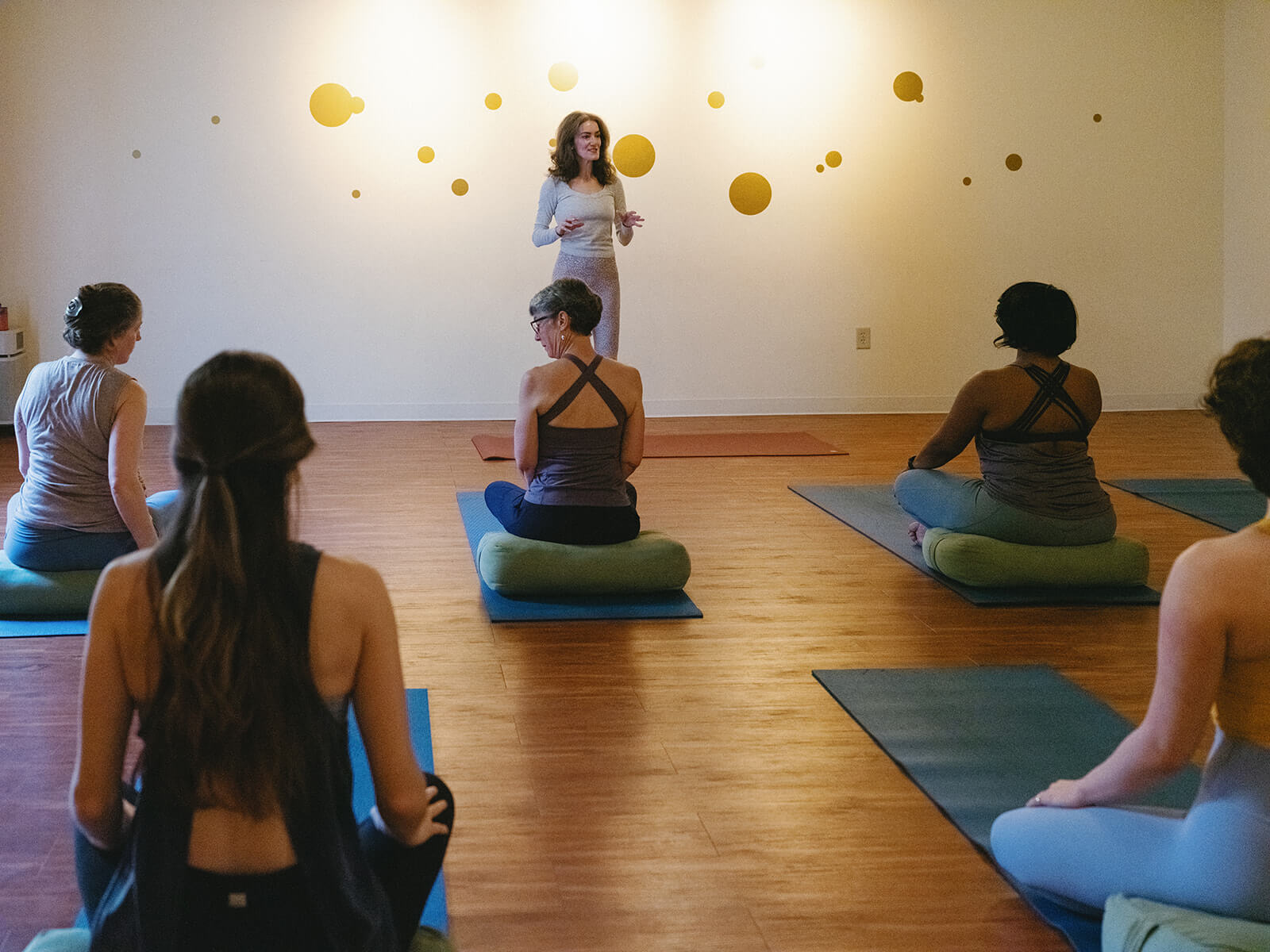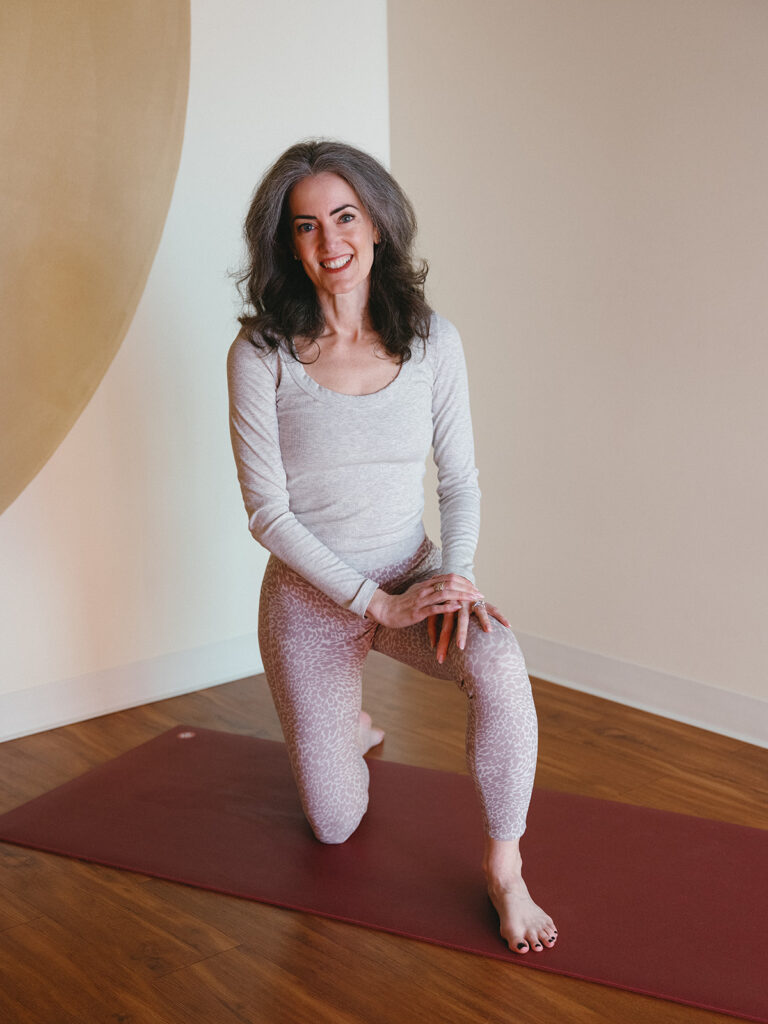When it comes to yoga class planning, music can feel like the finishing touch that sets the whole mood—or the thing that throws everything off. Many yoga teachers feel a lot of pressure to craft the perfect playlist to match the arc of their class. This piles on extra stress to the work that might already be making you anxious. Other teachers avoid music entirely, worried that it will disrupt the practice or bring unnecessary legal risk.
Mmusic isn’t inherently good or bad. Like any teaching tool, it depends on how—and why—you use it.
In this post, I’ll walk you through the key considerations around music in yoga: what’s legally required, how music shapes the energetic experience of your class, and practical ways to work with sound that align with your teaching style. Whether you’re a playlist devotee or a silence-first minimalist, you’ll walk away with clarity.
Rather listen to this as a podcast? It’s episode 42 of Yoga Teacher Confidential!
What the Law Actually Says
Let’s start with the least sexy but most important piece: licensing.
In the United States, playing recorded music in a yoga class is considered a public performance—even if you’re using a paid streaming service like Spotify or Apple Music. Unfortunately, those subscriptions don’t grant you the legal right to use the music in a commercial or group setting.
To be fully compliant, you need licensing from one or more of the performing rights organizations:
Each covers different catalogs of artists, which means studios technically need all three to play a wide range of music legally.
If you teach at a studio, ask if they hold these licenses. This isn’t about being difficult—it’s about fairness to musicians and protecting yourself legally. If you teach independently, such as in a gym, school, or community space, the responsibility likely falls on you.
Budget-Friendly and Legal Music Alternatives
Now for the good news: you have great options that won’t break the bank.
- YogiTunes: A subscription-based service designed for wellness professionals. All tracks are pre-licensed for use in yoga classes, and there’s even a Yoga Alliance member discount.
- Epidemic Sound: A robust royalty-free library with a broad range of instrumental tracks.
- Creative Commons Music: Some artists release music with licenses that allow for public, commercial use—just be sure to confirm the terms.
Some teachers go even further and create their own music, or collaborate with local musicians for live accompaniment. I’ve done both—a friend made the music for my yoga DVD back in the day!—and those collaborations added something truly special to the class atmosphere.
How Music Shapes the Energetic Experience
Music does more than fill silence. It sets tone, affects mood, and changes perception. Here are a few key ways sound can influence your class:
- Nervous system regulation: Rhythmic music can help students synchronize movement and breath. But too much stimulation—especially with strong beats or lyrics—can shift students out of the parasympathetic “rest and digest” state we aim to cultivate in yoga class.
- Focus and breath awareness: For beginners, soft music may be comforting. For experienced practitioners, it can be a crutch that interferes with internal awareness.
- Emotional state: Lyrics, tone, and tempo all carry mood. I’ve seen serene classes disrupted by a single unexpected, explicit lyric—or elevated by the perfect instrumental swell at the right moment.
And silence? It’s not nothing! Silence encourages pratyahara—withdrawal of the senses—and helps students turn their attention inward. Especially in a world full of noise, silence can be a rare and profound gift.
How to Decide: Music or Silence?
When choosing whether or how to use music, ask yourself:
- What’s your primary teaching intention? If your class is built around technical alignment, silence may support clearer cues. If your goal is to create a flowing, emotionally resonant journey, music might be the right tool.
- Who are your students? A group of 20-something vinyasa lovers may expect beats. A group of older adults may appreciate calm. Athletes, corporate professionals, beginners—they all have different expectations and needs.
- What does your teaching space call for? Gyms may benefit from music to mask outside noise. Intimate studios may not need any.
- How comfortable are you with tech? If music is core to your class, you need backups: downloaded playlists, fully charged devices, volume-tested speakers. And notifications silenced!
Practical Tips for Teaching with Music
If you do decide to include music, a few tweaks will make a big difference:
- Sound check your setup. Walk the room before class to hear what students will experience.
- Avoid lyrics—especially explicit ones. Even a single phrase can shift the tone.
- Keep it low. You should never need to raise your voice over your playlist.
- Have backups. A silent Plan B gives you peace of mind and keeps the focus on your students.
And one of my favorite tips: Use the restaurant principle: music should enhance the atmosphere, not dominate it. If your students are talking more about your playlist than their breath or practice, it might be time to reconsider.
What About Teaching Your Yoga Class without Music?
I started my teaching journey as a heavy music user. I crafted playlists for every class, matching tempo to arc. Music felt like a safety net—something to fill the silence when I wasn’t confident in my voice.
But as I grew, I taught in more settings where music wasn’t practical—team settings, large gyms, community rooms. No one missed it. And I discovered a deeper connection to my students and my own cues without it.
Now, I teach in silence. That evolution came with experience, but it also came with a shift in intention. I was no longer filling space—I was holding it.
Final Thoughts: Intentionality over Habit
You don’t have to use music. And you don’t have to give it up. What matters is that you choose intentionally, not by default or pressure.
- Stay compliant with legal requirements.
- Be responsive to your space and students.
- Use music with purpose—or embrace silence with confidence.
Whether you’re pressing play or unplugging entirely, let your core teaching intention guide you. When you align your choices with your values and your students’ needs, you create a class that feels whole, grounded, and truly yours.
Want support designing classes that flow with or without music?
Mastering the Art of Yoga Sequencing gives you the tools, structure, and mentorship to teach confidently and creatively in every setting.


